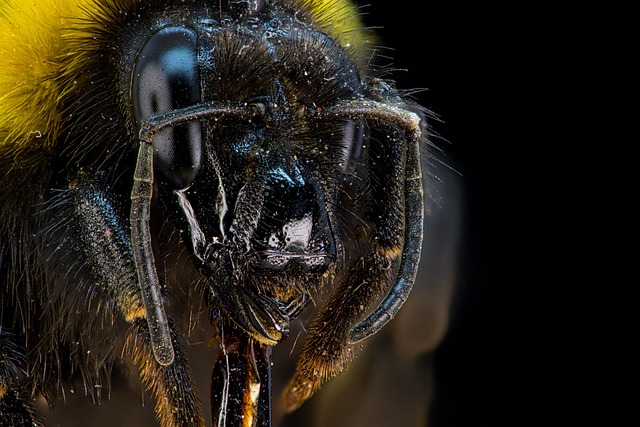Bed bug infestations require swift action for effective control. Early identification is crucial as these tiny insects hide in crevices and feed on human blood at night, leaving red bites. Preventative measures include regular cleaning and avoiding second-hand furniture. Traditional control methods blend chemical (insecticides) and non-chemical (heat treatment, steam cleaning, manual removal) tactics. DIY methods like heat treatment (above 120°F/49°C), essential oils, sealing cracks, and regular cleaning also help. Comprehensive post-treatment cleanup and prevention strategies, including deep cleaning, vacuuming, and identifying entry points, maintain a bed bug-free home.
“Uncover powerful solutions for eliminating stubborn bed bug infestations with our comprehensive guide. Understanding these tiny invaders is the first step, followed by exploring effective treatment options. From traditional residential bed bug control methods like heat and chemical treatments to alternative approaches like sealants and natural predators, we cover it all. Learn post-treatment steps crucial for maintaining a bed bug-free environment. Discover professional strategies for successful residential bed bug control.”
Understanding Bed Bug Infestations: Identification and Prevention
Bed bug infestations can quickly turn into a household hassle, but understanding these tiny pests is the first step to effective control. Residential bed bugs are small, wingless insects that feed on human blood, typically at night while their hosts sleep. Their flat bodies allow them to hide in crevices, cracks, and seams of furniture, walls, and floors, making them difficult to spot. Early identification is crucial for successful treatment. Look for telltale signs like small red bites on exposed skin, shed skin casings, or the presence of tiny dark spots (bed bug excrement) in affected areas. Preventative measures, such as regular cleaning, sealing entry points, and avoiding second-hand furniture, can significantly reduce the risk of an infestation.
Traditional Residential Bed Bug Control Methods
In traditional residential bed bug control, professionals often employ a combination of methods that include chemical treatments and non-chemical alternatives. Chemical options typically involve the application of insecticides designed to target and eliminate bed bugs. These products are carefully chosen and applied in specific areas to minimize exposure to residents and pets while ensuring maximum effectiveness against the infestation.
Non-chemical methods, on the other hand, focus on heat treatment, steam cleaning, and physical removal. Heat treatments use high temperatures to kill bed bugs and their eggs, making them particularly effective for deep penetration into cracks and crevices. Steam cleaning targets both adult bugs and nymphs by using hot steam to denature their protective outer layers. Physical removal involves manually gathering visible bed bugs and eggs, which can be effective in small-scale infestations or as a complementary method alongside other treatments.
Alternative Treatments for Effective Bed Bug Eradication
In addition to professional pest control services, there are several alternative treatments that can be effective in eliminating bed bugs from residential settings. Heat treatment is a popular option, as extreme temperatures can quickly kill both adult bugs and their eggs. This method involves heating the affected area to over 120°F (49°C), ensuring every nook and cranny is reached. Another natural approach involves using essential oils, such as peppermint, lavender, or tea tree oil, which have insecticidal properties. These oils can be applied directly to crevices and mattresses, repelling and eliminating bed bugs.
For those seeking DIY solutions, sealing cracks and gaps in furniture and walls is a crucial first step. This prevents bugs from hiding and spreading. Additionally, regular cleaning with hot water and drying clothes at high temperatures can help eliminate any lingering eggs or adults. There are also specialized bed bug monitors and traps available that can detect the presence of these pests, allowing for early intervention before an infestation grows. These alternative treatments offer homeowners effective residential bed bug control while providing eco-friendly and non-toxic options.
Post-Treatment Steps: Ensuring a Bed Bug-Free Environment
After successfully treating for bed bugs, it’s crucial to take additional steps to ensure a bed bug-free environment. This includes thoroughly cleaning all affected areas, washing bedding and clothing in hot water, and vacuuming floors and furniture. Disposing of or sealing infested items is also recommended.
To prevent future infestations, it’s essential to identify and seal potential entry points like cracks and crevices. Regularly inspecting mattresses and furniture for any signs of bed bugs can help catch them early. Additionally, maintaining a clean living space, avoiding hoarding, and being vigilant about decluttering contribute to creating an unwelcome environment for these pests, reinforcing effective residential bed bug control measures.
In addressing bed bug infestations, a multi-faceted approach combining understanding, prevention, and diverse treatment methods is key. While traditional residential bed bug control techniques remain effective, alternative treatments offer innovative solutions for eradication. After successful treatment, implementing post-measures ensures a sustained, bed bug-free environment. By adopting these comprehensive strategies, homeowners can reclaim their spaces from these persistent pests, emphasizing the importance of both professional knowledge and DIY dedication in achieving long-term relief.
